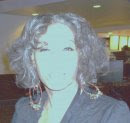
Millie lives on $1 a day earned from crushing rocks in a quarry, and she has asthma. This is enough for one meal a day for her whole family. She lives in a 4ft. x 7ft. hut with her six children, two of which are AIDS orphans she has adopted. They have no water, no electricity, and no possessions. It is so small that one person is appointed to say when everyone should roll over at night.
 At least, that was how Millie was living. Now she has a small house of her own, financed by a brick-making business she runs. All this was made possible because she learned how to roll beads out of strips of recycled paper.
At least, that was how Millie was living. Now she has a small house of her own, financed by a brick-making business she runs. All this was made possible because she learned how to roll beads out of strips of recycled paper.We have been deeply moved by the work of two friends of ours who went to Uganda, Africa. Dr. Charles was there to teach the local doctors how to use AIDS medicines. But before they left the US, he, his wife Torkin, daughter Devin, and friend Ginny sat together in prayer. “We said we were tired of talking about how hard the world is, and asked for something to do. This very clear intention was voiced within the context of prayer and sacred commitment,” Torkin told us. “We never dreamt it would be through paper beads!”
A few months later, Ginny and Devin joined Charles and Torkin in Kampala, the capital of Uganda. On a chance encounter in a Kampala slum, on their way to visit an AIDS patient, the women met Millie who was rolling paper beads but who told them that she had no market to sell them. They bought a few of her necklaces and, as they wore them, found that many people admired and wanted them. “So we went back to find this woman and discovered a group of her friends who also made beads. We bought about a 100 necklaces. We came back to the US for the summer and began to sell them to friends and at craft fairs.”
The beads began to generate interest, including a magazine article. Torkin and Ginny realized there was a market, but that most importantly it was about the story and the heartfelt desire to help those in need. One man, who loved the beads so much and wanted to give to the beaders, offered $200 for a necklace that was on sale for $20.
By September 2004 Torkin had returned to Africa and BeadForLife was born.
The women who become beaders all live in slums in Kampala. Many of them are HIV positive, malaria is rampant, and nearly all are raising, alongside their own children, other children they have adopted from some of the 1.4 million AIDS orphans in Uganda. At least 95% of the beaders are women and 40% are refugees, living as Millie did in huts with just enough room for them to lie down. All have multiple life challenges. As Torkin says, “It was very humbling to work with these people who struggle so deeply yet also know how to lift themselves up, to laugh, sing and have joy. In a song they wrote there is one line that remains in my heart: ‘We dance while we are suffering.’”
A beader who joins the BeadForLife program gets paid twice a month for their beads and they have to open a savings account. The program is 27 months long and the beaders all receive health care, optional family planning, and business training. By month 20, BeadForLife tops up their savings to $800, enough so that each one can begin their own business to support themselves after the bead-making program has finished. One woman, who used to wash prostitutes’ clothes in a nightclub, now owns a nightclub; there are restaurants, chicken farms, dry good stores, and clothing stores, all begun this way.
Beads can be bought online, but because of the power of the beaders stories, most beads are sold through BeadParties hosted in people’s own homes. This is how everyone can help. The host is sent a whole package of information with stories of the beaders, as well as African recipes, and 300 bead necklaces, bracelets and earrings. Many times two or three women do this together and it is really fun. There were 2000 bead parties last year; that is six or seven parties a day. And most importantly, the beads are beautiful — vibrant colors and different shapes and strings. The prices are low, $5 to $30 per item, so that everyone can afford to buy at least one item. Those dollars are immediately turned into income and food, medicine, school fees, and the hope that keeps them moving out of poverty.

BeadForLife has also been featured in Oprah’s ‘O’ Magazine and on NBC, with an overwhelming response. Get all the details at: www.BeadForLife.org
Let us hear from you. Do share with us your stories of getting out of poverty.
Getting Out of Poverty




